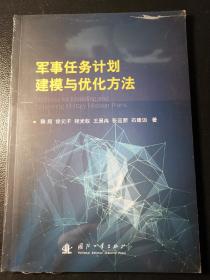
数的几何讲义(英文版)9787519200244
正版图书,可开发票,请放心购买。
¥ 27.3 7.8折 ¥ 35 全新
库存2件
广东广州
认证卖家担保交易快速发货售后保障
作者(德)西格尔
出版社世界图书出版公司
ISBN9787519200244
出版时间2016-01
装帧平装
开本其他
定价35元
货号3563123
上书时间2024-08-01
- 店主推荐
- 最新上架
商品详情
- 品相描述:全新
- 商品描述
-
商品简介
1945-1946学年,Carl Ludwig Siegel在纽约大学作了关于数的几何的系列讲座,关于该学科,当时除了Minkowski的书以外,没有其他任何书。为了符合Siegel对正文和插图的细节的精准性要求,该书中的主要题材由Bernard Friedman取自Siegel所做讲座的个人笔记, 并由Chandrasekharan做了改写,但是讲座的结构和风格保持了原样没有作任何改动。
作者简介
Carl Ludwig Siegel (C.L.西格尔,德国)是国际知名数学家,在数学界享有盛誉。本书凝聚了作者多年科研和教学成果,适用于科研工作者、高校教师和研究生。
目录
Chapter Ⅰ Minkowski's Two Theorems
Lecture Ⅰ
1.Convex sets
2.Convex bodies
3.Gauge function of a convex body
4.Convex bodies with a centre
Lecture Ⅱ
1.Minkowski's First Theorem
2.Lemma on bounded open sets in IRn
3.Proof of Minkowski's First Theorem
4.Minkowski's theorem for the gauge function
5.The minimum of the gauge function for an arbitrary lattice in IRn
6.Examples
Lecture Ⅲ
1.Evaluation of a volume integral
2.Discriminant of an irreducible polynomial
3.Successive miruma
4.Minkowski's Second Theorem (Theorem 16)
Lecture Ⅳ
1.A possible method of proof
2.A simple example
3.A complicated transformation
4.Volume of the transformed body
5.Proof of Theorem 16 (Minkowski's Second Theorem)
Chapter Ⅱ Linear Inequalities
Lecture Ⅴ
1.Vector groups
2.Construction of a basis
3.Relation between different bases for a lattice
4.Sub-lattices
5.Congruences relative to a sub-lattice
6.The number of sub-lattices with given index
Lecture Ⅵ
1.Local rank of a vector group
2.Decomposition of a general vector group
3.Characters of vector groups
4.Conditions on characters
5.Duality theorem for character groups
6.Kronecker's approximation theorem
Lecture Ⅶ
1.Periods of real functions
2.Periods of analytic functions
3.Periods of entire functions
4.Minkowski's theorem on linear forms
Lecture Ⅷ
1.Completing a given set of vectors to form a basis for a lattice
2.Completing a matrix to a unimodular matrix
3.A slight extension of Minkowski's theorem on linear forms
4.A limiting case
5.A theorem about parquets
6.Parquets formed by parallelepipeds
Lecture Ⅸ
1.Products of linear forms
2.Product of two linear forms
3.Approximation of irrationals
4.Product of three linear forms
5.Minimum of positive-definite quadrat,ic forms
Chapter Ⅲ Theory of Reduction
Lecture Ⅹ
1.The problem of reduction
2.Space of all matrices
3.Minimizing vectors
4.Primitive sets
5.Construction of a reduced basis
6.The First Finiteness Theorem
7.Criteria for reduction
8.Use of a quadratic gauge function
9.Reduction of positive-definite quadratic forms
Lecture Ⅺ
1.Space of symmetric matrices
2.Reduction of positive-definite quadratic forms
3.Consequences of the reduction conditions
4.The case n=2
5.Reduction of lattices of rank two
6.The case n=3
Lecture Ⅻ
1.Extrema of positive-definite quadratic forms
2.Closest packinng of (solid) spheres
3.Closest packing in two, three, or four dimensions
4.Blichfeldt's method
Lecture ⅩⅢ
1.The Second Finiteness Theorem
2.An inequality for positive-definite symmetric matrices
3.The space PK
4.Images of R
Lecture ⅩⅣ
1.Boundary points
2.Non overlapping of images
3.Space defined by a finite number of conditions
4.The Second Finiteness Theorem
5.Fundamental region of the space of all matrices
Lecture ⅩⅤ
1.Volume of a fundamental region
2.Outline of the proof
3.Change of variable
4.A new fundamental region
5.Integrals over fundamental regions are equal
6.Evaluation of the integral
7.Generalizations of Minkowski's First Theorem
8.A lower bound for the packing of spheres
References
内容摘要
1945~1946学年,CarlLudwigSiegel在纽约大学作了关于数的几何的系列讲座,关于该学科,当时除了Minkowski的书以外,没有其他任何书。为了符合Siegel对正文和插图的细节的精准性要求,西格
尔所著的《数的几何讲义(英文版)》一书中的主要
题材由BernardFriedman取自Siegel所做讲座的个人笔记,并由Chandrasekharan做了改写,但是讲座的结构和风格保持了原样没有作任何改动。
— 没有更多了 —





















以下为对购买帮助不大的评价